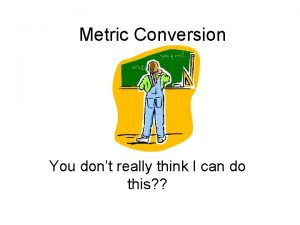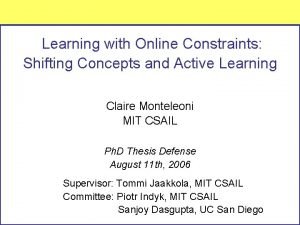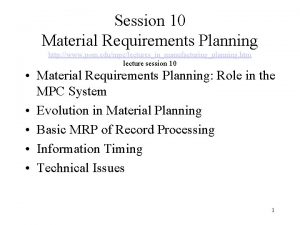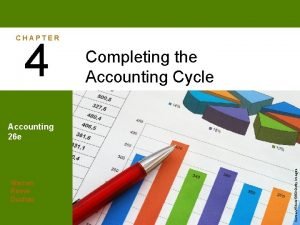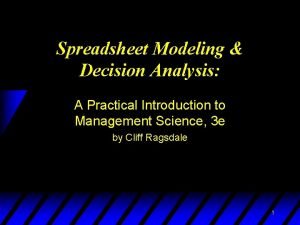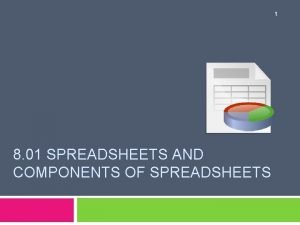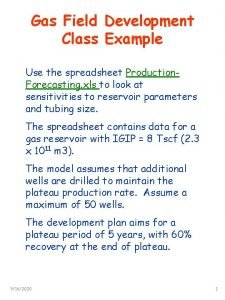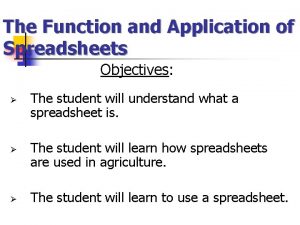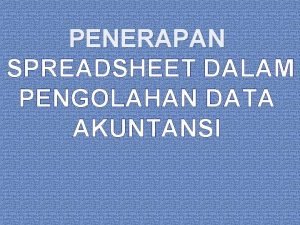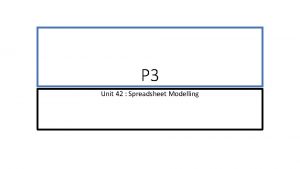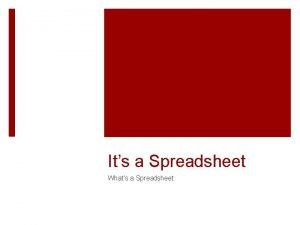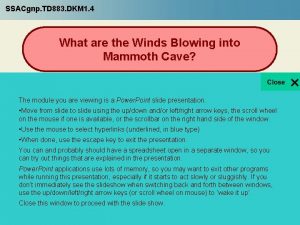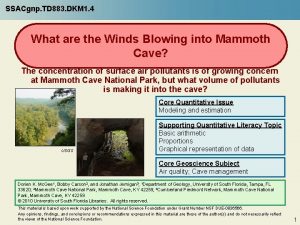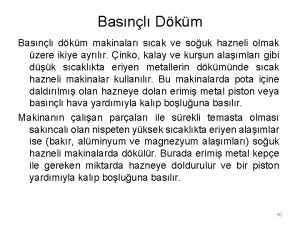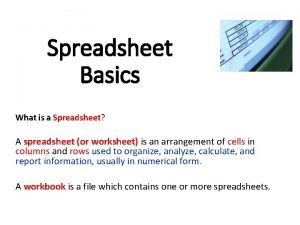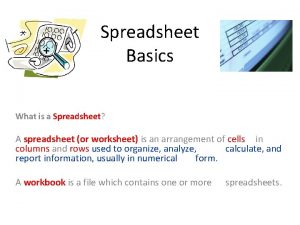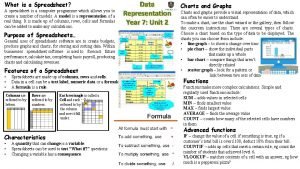SSACgnp QA 76 75 DKM 1 2 Spreadsheet

















- Slides: 17

SSACgnp. QA 76. 75. DKM 1. 2 Spreadsheet Warm Up for Geology of National Parks Modules Core Quantitative Issue Function Supporting Quantitative Skills Order of operations Order of magnitude Unit conversions Proportions http: //www. nps. gov/grca/ An Excel tutorial to get you started on spreadsheet modules for your Geology of National Parks course. Excel concepts and skills Spreadsheet components Formatting cell formulas Functions: LOG, SUM, AVERAGE, MAX Dorien Mc. Gee, Meghan Lindsey, and Len Vacher Department of Geology, University of South Florida, Tampa, FL 33620 © 2009. University of South Florida Libraries. All rights reserved. This material is based upon work supported by the National Science Foundation under Grant Number NSF DUE-0836566. Any opinions, findings, and conclusions or recommendations expressed in this material are those of the author(s) and do not necessarily reflect the views of the National Science Foundation. 1

Overview Geology, like other sciences, is a quantitative subject requiring some quantitative literacy. Numbers are necessary to express sizes, distances, lengths of times, rates of processes, and many other quantities. To learn geology, you must work with numbers. To some extent, you must think with numbers. In your Geology of National Parks course, some of your working and thinking with numbers will be done with spreadsheets. Spreadsheets provide a convenient way to organize numbers and perform elementary calculations. You may not have had an opportunity to use and make spreadsheets before, or the time to learn how, so we are providing this module as a tutorial to introduce some of the basic Excel skills for the Geology of National Parks modules that will be used in this course. Once you get the hang of spreadsheets, and how to calculate with them, you will find yourself using spreadsheets as your calculator of choice in other activities for this course, in others courses, and outside the University. Slides 3 -6 – Spreadsheet Components Slides 7 - 10 – Introduction to Cell Formulas Slides 11 -15 – Functions Slides 16 -17 – Learning More with End of Module Assignments 2

Spreadsheet Components When you first open Excel, you are presented with a grid of boxes. This is the spreadsheet on which you will enter data. The file itself is called a workbook and is composed of several spreadsheets which can be accessed by clicking on the tabs at the bottom of the spreadsheet. You may add, delete, or change the name of tabs by right-clicking on the tabs themselves. Above the spreadsheet is the toolbar, and above and below the spreadsheet is a series of command formatting buttons. Many of these are identical to those used in Microsoft Word. Taking time to familiarize yourself with these first will make using them much easier later. toolbar and buttons spreadsheet tabs 3

Spreadsheet Components (cont’d) Each box in the spreadsheet is called a cell, and each cell has its own unique alphanumeric cell reference. The cell reference begins with a letter, indicating the column in which the cell is found. The cell reference ends with a number, indicating its row. When you select a cell by clicking on it, the column and row to which it belongs will automatically be highlighted, making it easier to identify its cell reference. A field at the bottom-left of the toolbar also indicates the cell reference. Cells are discrete units that can be loaded with text, numbers, or formulas. This tutorial will show you the various ways cells can be used. cell reference (A 1) cell 4

Spreadsheet Components (cont’d) Another key component of the spreadsheet is the function bar. Here is where you can enter a label (text), number, or cell formula (cell equation) into the highlighted cell (click on the cell to highlight it; the address of the cell is in the box to the left of the function bar). You may also type the label, number, or cell formula into the cell itself by selecting it and typing in what you want. If you enter a cell formula into a cell and it is correctly formatted, what you type will disappear and be replaced with the formula’s solution (a number); if it is not correctly formatted, the cell will show an error message. In either case, click on the cell and you can view the cell formula in the function bar 5

Spreadsheet Components (cont’d) Cell formula Solution to cell formula 6

Introduction to Formulas Entering a label or a number is straightforward. Simply type what you want. What you type is what you get. Entering a formula is only slightly more complicated. The Big Thing is to remember to start with the equals symbol (=). Again, what you type is what you get. If you type and enter =(2*6)+3 , Excel will tell you what you get when you multiply 2 times 6 and then add 3, which is what the operation symbols in the formula say. But if you omit the equals symbol, Excel will think you mean text and display (2*6)+3. In our example of =(2*6)+3, the parentheses are unnecessary because multiplication takes precedence over addition (Excel multiplies before it adds). Enter =2*6+3 without the parentheses and check that you get the same result. Sometimes the parentheses are very necessary. See what you get when you type the following: =2+6*3 =(2+6)*3 Excel uses the rules for order of operations. 7

Introduction to Formulas (cont’d) Excel uses the five standard number operations. Using the numbers 6 and 2, what numbers should be produced for each of the following five cell formulas? For addition, =6+2 For subtraction, =6 -2 For multiplication, =6*2 For division, =6/2 For exponentiation, =6^2 Check your answers with Excel Suppose you are given a spreadsheet with the areas of 10 national parks. Suppose you are interested in the difference in area between Yosemite National Park and Point Reyes National Seashore, the two California examples. You can find the difference by typing in a formula that subtracts one number from the other in Cell B 13 (look in the function bar). But why do it that way? Use cell addresses rather than the numbers. What do you get when you enter =B 11 -B 9 into Cell B 13 or the function bar? Click on the Excel worksheet to the right and save immediately to your computer to recreate the spreadsheets in this module. Yellow cells contain given values, and orange cells contain formulas. This spreadsheet also contains a tab called “EOM Answers, ” this is where your answers to the end-of-module questions go. 8

Introduction to Formulas (cont’d) It is an immense convenience to use cell addresses. Let’s take another example. In Column B of this spreadsheet we see the areas of those ten national parks again. Note from the label in Cell B 1 that the areas are given in acres (to an astonishing number of significant digits). We are interested in stating all the areas in square miles rather than acres. Thus we start Column C. Note that Cell C 2 is highlighted. The number shown in the cell is the area in square miles for Death Valley NP. That number was entered by typing in the formula shown in the function bar. The formula =B 2*0. 0015625 says to take the number in Cell B 2 and multiply by 0. 0015625. In other words, Excel does: = 3, 323, 771. 75 * 0. 0015625 to produce the value shown in Cell C 2. Where did the number 0. 0015625 come from? That number is the conversion factor to convert acres to square miles. It is the number of square miles in one acre. In other words, 1 acre = 0. 0015625. Given that information, how many acres are in one square mile? That might be an easier number for you to remember. Converting areas back and forth between square miles and acres is an example of unit conversion, a type of calculation that comes up often. Other common examples are meters to feet and years to days. A unit conversion using a conversion factor is an example of a proportion. For example: 5193 sq mi : 3, 323, 771 ac = 0. 0015625 : 1 9

Introduction to Formulas (cont’d) Now we want to convert all the areas to square miles. How might you do that? One way would be to retype the formula we used in the previous slide – over and over, changing the cell reference in each row. You don’t have to do that! There is an easier way. In fact, there a couple of easier ways. Here is one of them: Select the cell containing the formula you wish to copy. Click the small black box in the lower-right corner of the highlighted cell (your cursor should turn into a thin black cross when you’ve reached the right spot)…. …. and drag down until the box extends to the desired row. When you release the mouse button, your formula will be copied into the selected cells and the cell references adjusted as necessary. Another way is to copy and paste. Right click on Cell C 2 and select copy. Then, as an example, right click on Cell C 7, drag down to Cell C 8, release, and then right click and select paste. That will copy the formula from C 2 into both Cell C 7 and Cell 8, changing the cell reference to B 7 for the equation in C 7, and B 8 for the equation in C 8. Note that the copy and paste preserves the relative position of the addressed cells. For example, if you were to copy the formula in Cell C 2 to Cell B 5, Excel would give you an error message (#VALUE). Why? 10

Your Formula is a Function A function is one of the most important concepts in quantitative literacy. The quantitative literacy book Understanding our Quantitative World 1 starts with functions in its chapter 1. That book defines a function as a “rule” that, for each valid input, assigns one and only one output. In math classes, you have probably seen functions written in terms of x’s and y’s. For example, consider y = 0. 0015625 x Here, x is the input variable, and y is the output variable. You obtain a value of y by multiplying the value of x by 0. 015625. That’s the rule that defines this function. More succinctly, you can say y is a function of x, which you can write as y = f(x). The rule for this example then is given by f(x) = 0. 0015625 x. Now consider what’s written in the function bar. Instead of writing y and x for the output and input variables, Excel writes C 2 and B 2, respectively. The rule connecting them is C 2 = B 2*0. 0015625 1 Janet Anderson and Todd Swanson, 2005, Mathematics Association of America. 11

Built-in Functions In addition to functions that you can create such as f(x) = B 2*0. 0015625, you can use many functions that Excel has built in. One of these is the function that produces the order of magnitude of a number. Order of magnitude is an important topic in the quantification of geologic variables, because the subjects of geology are BIG. They involve big space and big time. A thousand (which is written 1, 000 or 103 or 10^3 or 1 E 3) is Order of Magnitude 3, because it is a 1 followed by three zeroes. A million (which is written as 1, 000, or 106, or 10^6, or 1 E 6) is Order of Magnitude 6, because it is a 1 followed by six zeroes. A million exceeds a thousand by three orders of magnitude. The function that calculates the order of magnitude of a number has a familiar name. Maybe you have heard of it. It is the common logarithm function. Using the input B 2, the formula in Cell C 2 is =LOG(B 2) 12

Built-in Functions (cont’d) You may have noticed that the log function was written in capital letters and with parentheses. All Excel functions are written that way. The parenthetical information is important. It identifies all of the input variables for the built-in function to use. In the case of =LOG(B 2), the input variable was a single cell. For an example involving more than one input, consider this spreadsheet listing the number of visitors to the ten parks. Suppose you wanted to calculate the total number of visitors to the ten parks. Sure you could write your own function: =B 2+B 3+B 4+B 5+B 6+B 7+B 8+B 9+B 10+B 11 But it’s so much easier to use the built-in function for sum =SUM(B 2: B 11) Note here that the information inside the parentheses is a cell field. The input is the complete field from Cell B 2 through Cell B 11. The rule (sum) is to add up the values in all the cells. 13

Built-in Functions (cont’d) Numerous other functions apply to fields of data. This spreadsheet shows three of them: =AVERAGE(B 2: B 11) =MAX(B 2: B 11) =Min(B 2: B 11) You can write formulas that do arithmetic with built-in functions. What does this formula produce? -=SUM(B 2: B 11)/COUNT(B 2: B 11) You can write formulas that nest built-in functions: functions of functions. Ask a question that the number produced by this formula would answer: =LOG(MAX(B 2: B 11)) – LOG(MIN(B 2: B 11)) Note the use of parentheses within parentheses. 14

Finding Functions We have showed you a few of the more common built-in functions. There are many more. To peruse a list, click the Insert Function (ƒx) button to the left of the function bar…. … and a window will appear. It allows you to search for a function, select functions from a category, and show you how to format its formula. (CAUTION: when you click the Insert Function button, be sure you have not inadvertently highlighted a cell in the spreadsheet that contains a function; otherwise the window that opens will describe the function used in that cell). Take some time to familiarize yourself with the available functions. 15

End-of-Module Assignments 1. Rules for order of operations. Review Slides 7 and 8. What are the five operations. What order does Excel perform them if two of them appear in the same formula. For example, the examples =2+6*3 and =2*6+3 were meant to convince you that Excel multiplies before it divides. Explore other combinations. For example, for division and subtraction, you might try =6 -3/2 and =6/3 -2. For exponentiation and multiplication, you might try =3*2^2 and =3^2*2. After exploring several combinations, fill in the blanks of the following sentence. Excel does _____ first, then ______ and _____ (which are of equal rank), and finally _______ and _____ (which are also of equal rank). (When in doubt, though, use parentheses, but you have to use them correctly. ) 2. Unit conversions. Review Slide 9. Google gives three suggested routes to drive from the south entrance of USF to the south entrance of Yellowstone Park. The distances are 2330 miles going through Missouri, 2450 miles going by way of Oklahoma and Colorado, and 2487 miles via Illinois and Iowa. For comparison, the radius of the Earth is 6370 km. What proportion of the distance to the center of the Earth is each of those USF-Yellowstone distances? For the conversion of miles to kilometers, use 1 mile = 1. 609 km. Give answers as percents. 3. Order of magnitude. Review Slide 12. The radius of the Earth (considered as a sphere) is 6370 km. This number can be written as 10 raised to the 3. 8 power: 103. 8 or 10^3. 8. The Earth-Moon distance (average) is 385, 000 km: 105. 6 or 10^5. 6. The Earth-Sun distance is 150, 000 km: 108. 2 or 10^8. 2. Find the logarithm of those three numbers: 6, 370; 385, 000; and 150, 000. Sketch a vertical scale showing distances in km by orders of magnitude from 1 to 9. Have equal space between successive orders of magnitude. Your sketch will show a logarithmic scale. Locate on it the distances of USF to the Tampa airport, to Yellowstone Park, to the center of the Earth, to the moon, and to the sun. 16

End-of-Module Assignments (cont’d) 4. Concept of a function. Review Slide 11. We said the common logarithm is a function. In mathematics notation, it can be expressed f(x) = log(x). It takes an input variable (x) and returns an output. The input must be a positive number (try to use Excel to find the log of a negative number or zero; see what happens). The output will be positive, negative or even zero (for log of 1), and no two different inputs will produce the same output. So the common logarithm is a legitimate function. From Slide 11, recall that there must be a rule that connects the input to the output. Using what you found in Question 3 of the preceding slide, describe in plain words (not mathematics language) what you think the rule is. (Hint, you might find the word exponent useful. ) 5. Excel skills. On the spreadsheet you saved to your computer from Slide 8, there is a list 15 more parks (at the bottom of the “EOM Answers” tab), their areas in acres, the number of visitors, and the areas in square miles. The yellow cells contain data. The orange cells, which are empty, are formulas. a. Complete the spreadsheet by filling in the missing cell formulas (all the areas in square miles; the sum, average, maximum and minimum number of visitors). b. Use your spreadsheet to identify which of these 15 parks has the highest number of visitors per square mile, and which has the lowest number of visitors per square mile. What are those two values? Yellow cell means a number is entered. Orange cell means a formula is or should be entered. 17
 Dkm broker sa de cv
Dkm broker sa de cv Mass chart
Mass chart Dkm online colt
Dkm online colt Dkm eskişehir
Dkm eskişehir Mrp spreadsheet
Mrp spreadsheet Gdsr spreadsheet
Gdsr spreadsheet Owner's equity examples
Owner's equity examples Cost segregation spreadsheet
Cost segregation spreadsheet Cliff ragsdale spreadsheet modeling solutions
Cliff ragsdale spreadsheet modeling solutions Components of spreadsheet
Components of spreadsheet Number crunching example
Number crunching example Cost segregation spreadsheet
Cost segregation spreadsheet Mouse colony management software
Mouse colony management software Spreadsheet
Spreadsheet Application of spreadsheet
Application of spreadsheet Spreadsheet akuntansi
Spreadsheet akuntansi Unit 42 spreadsheet modelling
Unit 42 spreadsheet modelling How to copy and paste images on mac
How to copy and paste images on mac

